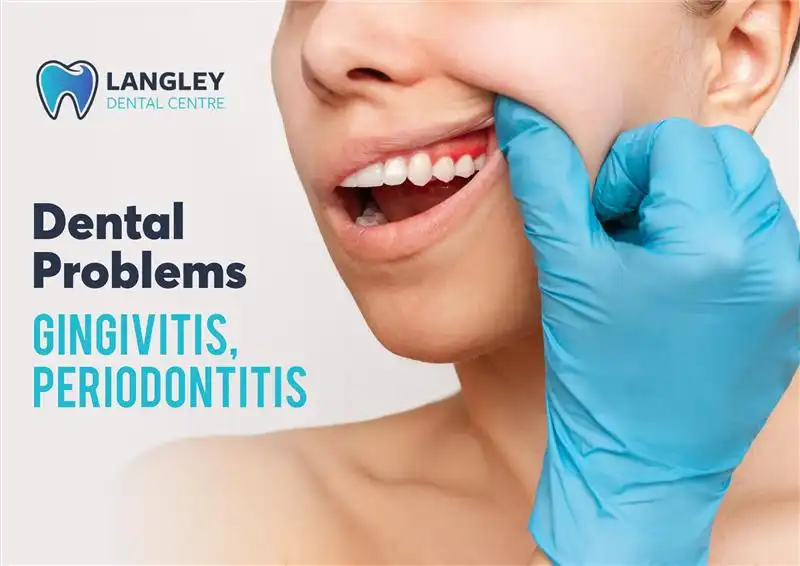It’s important to be aware of the signs and symptoms of gingivitis, as this can be a precursor to periodontal disease, which can cause tooth loss and other complications. While gingivitis can be prevented, once it progresses to periodontitis it is much more difficult – and expensive – to treat.
Fortunately, there are steps you can take to help prevent gingivitis from developing or worsening. We’ll give you the facts about gum inflammation and provide simple tips for maintaining healthy gums. Read on for everything you need to know about preventing gingivitis.
What Is Gingivitis and How Does It Develop?
Gingivitis is an inflammation of the gums, caused by a bacterial infection. The bacteria builds up in a small space where the teeth and gums connect, known as the gingival margin. If this bacterial plaque is not removed, it can turn into tartar, which can cause further damage to the gums and teeth.
As plaque builds up, it hardens on the teeth as tartar and causes irritation to the gums. As a result, your gums become red and inflamed. You may even start to experience bleeding when you brush your teeth or floss. If left untreated, periodontal disease may begin to develop due to this severe inflammation and infection of your gums.
By proper dental hygiene including brushing your teeth twice daily and flossing once a day, you can help prevent gum diseases such as gingivitis from occurring. See your dentist if you have any concerns about toothaches or gum pain that do not subside after proper brushing and flossing techniques have been attempted at home.
Signs and Symptoms of Gingivitis: Recognizing the Early Stages
Gingivitis is a type of gum disease that can be hard to recognize because it often does not cause any pain or discomfort. However, there are some early warning signs that you should watch for.
The main symptom is swollen, red gums around the teeth, accompanied by a bad taste in your mouth or bad breath. Your teeth may also start to feel loose or shift away from the gums, which could lead to periodontal gum disease if left untreated. Other signs include bleeding during brushing, receding gums, and increased sensitivity to hot and cold foods and drinks.
It’s important to have a consultation as soon as possible if you notice any of these symptoms so that your dentist can provide you with the right treatment. If you live in and around Surrey or Langley, you can contact us or book an appointment with us to get the possible treatment for your teeth. If caught early on, gingivitis can be prevented from progressing into something more serious.
The Link Between Gingivitis, Periodontitis and Other Health Issues
Unfortunately, the danger associated with gingivitis does not stop there. Studies show that gingivitis and other forms of periodontal gum disease can increase the risk of developing more serious medical issues such as antibiotic resistance, strokes, heart attack and stroke.
This link is largely due to the increase in bacteria present in our bodies when we have periodontal disease. The bacteria found in these oral infections can travel into other parts of our body, leading to conditions such as cardiovascular disease.
Furthermore, studies have also linked inflammation caused by periodontal gum disease to numerous other chronic diseases such as Alzheimer’s, arthritis and diabetes. So, it’s important to take steps to prevent gingivitis and treat it early if you are already experiencing it.
Preventing Gingivitis: A Daily Oral Care Routine Is Key
Maintaining good oral hygiene is key to preventing gingivitis. An effective daily oral care routine takes just a few minutes, but it ensures that your mouth remains healthy and bacteria-free.
Here are a few tips for creating an effective daily care routine:
- Brush your teeth twice per day for two minutes each time, using a toothbrush with soft, rounded bristles.
- Floss at least once per day to clean away plaque and bacteria from the spaces between your teeth where a toothbrush can be difficult to reach.
- Consider using an antimicrobial mouthwash to help reduce bacteria and gum inflammation.
- Avoid tobacco products, including cigarettes and chewing tobacco, as they can lead to increased gingivitis and periodontal disease risk.
By following these steps every day, you can help ensure that your gums remain healthy and free of inflammation and infection.
Professional Dental Cleanings and Exams: How Often Should You Go?
Regular and professional dental cleanings and exams are essential for preventing gingivitis, as well as catching early warning signs of periodontal gum disease. Cleanings remove plaque that has built up on teeth and below the gum line, preventing the bacteria from continuing to grow.
So how often should you be getting a professional cleaning? The answer really depends on your individual needs and risk factors. The American Dental Association recommends that adults, especially those with gum disease, get a professional cleaning and exam at least twice a year.
If you do not have any existing risks factors or dental problems, your dentist may recommend scaling every three to four months. This is because plaque builds up quickly over this time period, making it much harder to remove without professional help. For those with existing gingivitis or other concerns, a more frequent schedule may be recommended for high-risk areas in your mouth.
Your dentist can provide specialized advice about the best approach for preventing gingivitis based on your personal risk factors. Ultimately, good oral hygiene and regular visits to your dentist will help keep gingivitis at bay and ensure that any problems are caught in their early stages.
Treatment Options for Gingivitis: From Mild to Severe Inflammation
Gingivitis can range from mild to severe, and treatment options vary depending on the severity.



